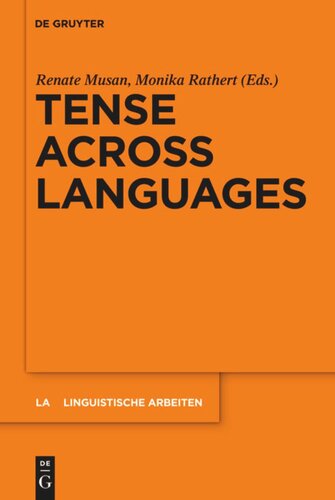

Most ebook files are in PDF format, so you can easily read them using various software such as Foxit Reader or directly on the Google Chrome browser.
Some ebook files are released by publishers in other formats such as .awz, .mobi, .epub, .fb2, etc. You may need to install specific software to read these formats on mobile/PC, such as Calibre.
Please read the tutorial at this link: https://ebookbell.com/faq
We offer FREE conversion to the popular formats you request; however, this may take some time. Therefore, right after payment, please email us, and we will try to provide the service as quickly as possible.
For some exceptional file formats or broken links (if any), please refrain from opening any disputes. Instead, email us first, and we will try to assist within a maximum of 6 hours.
EbookBell Team

5.0
110 reviewsThis book addresses recent developments in the study of tense from a cross-paradigm and cross-linguistic point of view. Leading international scholars explore challenging ideas about tense at the interfaces between semantics and syntax as well as syntax and morphology. The book is divided into three main subsections: 1) Tense in tenseless languages; 2) Tense, mood, and modality, and 3) Descriptive approaches to some tense phenonema. Although time is a universal dimension of the human experience, some languages encode reference to time without any grammatical tense morphology of the verb. Some of these exceptional “tenseless” languages are investigated in this volume: Kalaallisut, Paraguayan Guaraní and Movima. Modal verbs are polyfunctional in the sense that they express both tense and modality. In this volume, an untypical modal is analyzed, a modal analysis of imperatives is argued for, and sentential mood, which is closely related to modality, is analyzed. It is always interesting to look at the expression of tense in understudied languages, which is done here for Scottish Gaelic, Austronesian Rukai and German dialects. The volume can be used for graduate and undergraduate level teaching